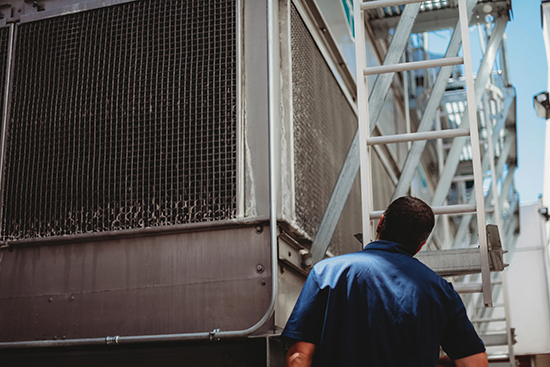As the seasons change and temperatures drop, it’s time for facility managers and building owners to consider shutting down their cooling towers for the winter. Properly winterizing your cooling tower is essential to prevent damage, ensure safety, and prepare for a trouble-free start-up when warmer weather returns. In this blog, we’ll walk you through the steps and considerations for shutting down your cooling tower for the season.
Conduct a Thorough Inspection:
Before beginning the shutdown process, perform a comprehensive inspection of your cooling tower. Look for signs of wear and tear, corrosion, leaks, or any other issues that may need attention. Address these problems before proceeding with the shutdown.
Review Manufacturer Guidelines:
Consult the manufacturer’s guidelines for your specific cooling tower model. Manufacturers often provide detailed instructions for winterization, including recommended procedures and products.
Drain the System:
Begin by draining the cooling tower system. This involves removing all water from the tower basin, piping, and heat exchangers. Ensure that the system is completely empty to prevent freezing and potential damage.
Clean and Disinfect:
After draining, clean the interior of the cooling tower thoroughly. Remove debris, algae, and any accumulated scale. Consider disinfecting the system to prevent the growth of harmful microorganisms during the dormant period.
Insulate or Cover:
To protect against freezing temperatures and ice formation, insulate vulnerable components, such as pipes, valves, and pumps. Alternatively, you can use specially designed cooling tower covers or blankets to shield the unit from the elements.
Disconnect Electrical Components:
Turn off and disconnect all electrical power to the cooling tower. This includes the fan motors, pumps, and any control systems. Protect exposed electrical components from moisture and cold.
Lubricate Moving Parts:
Apply lubrication to moving parts, such as fan bearings and motor shafts, to prevent rust and ensure smooth operation when the system is restarted.
Drain Chemicals:
If you use water treatment chemicals in your cooling tower, be sure to drain and properly store them according to manufacturer recommendations. Dispose of any chemicals that have expired.
Document Shutdown Procedures:
Maintain detailed records of the shutdown process, including dates, actions taken, and any issues discovered. This documentation will be valuable when it’s time to restart the cooling tower.
Monitor Periodically:
Throughout the winter season, periodically check the cooling tower for signs of damage or issues that may arise due to weather conditions. Promptly address any problems to prevent them from worsening.
Properly shutting down your cooling tower for the winter is a critical maintenance task that helps extend the life of your equipment and ensures a smooth restart when warmer weather arrives. By following these steps and adhering to manufacturer guidelines, you can protect your cooling tower investment and maintain a safe, efficient cooling system for your facility. Remember, winterization is an investment in the long-term performance of your cooling tower, so don’t overlook its importance.






